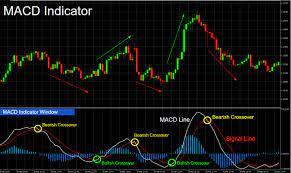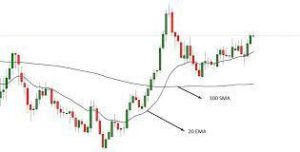Introduction

Indicators for Day Trading Forex
Forex trading is one of the most popular ways to make money online. With a daily turnover of over $5.3 trillion, the Forex market is the largest financial market in the world. However, the Forex market is also one of the most complex and volatile markets, making it difficult for traders to make informed decisions.
In order to make the most of your Forex trading journey, it is essential to have the right tools and resources. One of the most important tools for Forex traders is a set of indicators that can help them make informed decisions about when to enter and exit trades. In this article, we’ll take a closer look at the best indicators for day trading Forex and how they can be used to your advantage.
What are Forex Indicators?
Forex indicators are technical tools that are used to analyze the price and volume of currency pairs. They are designed to help traders make better decisions about when to enter and exit trades by providing valuable information about market trends, volatility, and momentum.
There are a variety of different indicators that are commonly used by Forex traders, each of which provides unique information about the market. Some of the most popular indicators include moving averages, Bollinger Bands, and MACD.
Top 5 Best Indicators for Day Trading Forex
- Moving Averages
Moving averages are one of the most widely used indicators for day trading Forex. They are a simple mathematical calculation that takes the average price of a currency pair over a set period of time, such as the last 20 days or 50 days.
The main purpose of moving averages is to help traders identify the current trend of a currency pair. If the currency pair is trading above the moving average, it is considered to be in an uptrend. If the currency pair is trading below the moving average, it is considered to be in a downtrend.
Moving averages are also useful for identifying potential support and resistance levels. When the price of a currency pair approaches its moving average, it is often seen as a potential support level. When the price of a currency pair moves away from its moving average, it is often seen as a potential resistance level.
- Bollinger Bands
Bollinger Bands are another popular indicator for day trading Forex. They are a set of lines that are plotted two standard deviations away from a simple moving average.
Bollinger Bands are used to identify potential market volatility. When the price of a currency pair is trading near the upper Bollinger Band, it is considered overbought and may be due for a correction. When the price of a currency pair is trading near the lower Bollinger Band, it is considered oversold and may be due for a bounce.
Bollinger Bands are also useful for identifying potential breakouts. When the price of a currency pair breaks through the upper or lower Bollinger Band, it is often seen as a sign of a potential trend change.
- MACD
The MACD (Moving Average Convergence Divergence) is a popular momentum indicator for day trading Forex. It is calculated by subtracting the 26-period exponential moving average from the 12-period exponential moving average.
The MACD is used to identify potential trend changes and momentum. When the MACD crosses above the signal line, it is considered a bullish signal and may indicate the start of a new uptrend. When the MACD crosses below the signal line, it is considered a bearish signal and may indicate the start of a new downtrend.
- RSI
The RSI (Relative Strength Index) is a popular momentum indicator that is used to identify potential overbought and oversold conditions in the market. It is calculated by comparing the average gains and losses of a currency pair over a set period of time.
The RSI ranges from 0 to 100, with values above 70 considered overbought and values below 30 considered oversold. When the RSI is above 70, it may indicate that the currency pair is due for a correction. When the RSI is below 30, it may indicate that the currency pair is due for a bounce.
- Stochastic Oscillator
The Stochastic Oscillator is a popular momentum indicator that is used to identify potential overbought and oversold conditions in the market. It is calculated by comparing the closing price of a currency pair to its price range over a set period of time.
The Stochastic Oscillator ranges from 0 to 100, with values above 80 considered overbought and values below 20 considered oversold. When the Stochastic Oscillator is above 80, it may indicate that the currency pair is due for a correction. When the Stochastic Oscillator is below 20, it may indicate that the currency pair is due for a bounce.

Using Forex Indicators in Your Trading Strategy
Forex indicators can be a valuable tool for day traders, but it is important to use them in combination with other tools and resources to develop a comprehensive trading strategy. Some tips for using Forex indicators in your trading strategy include:
- Use multiple indicators to confirm your trading decisions
It is important to use multiple indicators in combination to confirm your trading decisions. For example, you may use moving averages and Bollinger Bands to identify the trend, and then use the RSI or Stochastic Oscillator to confirm overbought or oversold conditions.
- Pay attention to market fundamentals
Forex indicators should be used in combination with market fundamentals, such as economic data releases and central bank announcements. These events can have a significant impact on the Forex market and should be taken into consideration when making trading decisions.
- Keep it simple
It can be tempting to use a large number of indicators in your trading strategy, but it is important to keep it simple and focus on a few key indicators that provide the information you need. Overcomplicating your trading strategy can lead to confusion and poor trading decisions.
- Utilize proper risk management techniques
Regardless of how skilled a trader you may be, risk management is a critical component of day trading in Forex. It is important to have a plan in place for managing your risk, such as setting stop loss orders, limiting the amount of trades you take on a single day, or following a risk-reward ratio.
- Stay up-to-date with market news and events
Staying up-to-date with market news and events is another important aspect of day trading in Forex. The Forex market is highly influenced by global events and economic data releases, so it is important to be aware of any potential market-moving events.
- Maintain discipline and patience
Day trading in Forex requires discipline and patience. It is important to stick to your trading plan and not make impulsive decisions based on emotions. Successful day traders are able to maintain discipline and stick to their strategies, even in the face of short-term losses.
In conclusion, the best indicators for day trading Forex can provide valuable information for traders looking to make informed trading decisions. However, it is important to remember that indicators should be used in combination with other tools and resources, such as market news and events, proper risk management techniques, and a well-defined trading strategy. By utilizing all of these resources, day traders in Forex can increase their chances of success.